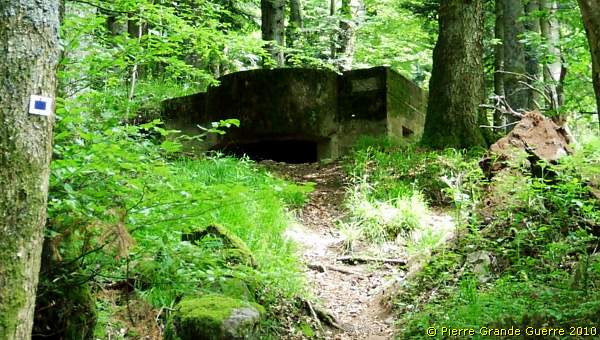LORRAINE - Lanfroicourt – Nomeny - Monument du Grand Couronné
Year of visit: 2012

South of Manhoué we start this trip at Lanfroicourt along the French side of the Franco-German 1871-1918 border, marked by the meandering Seille river. We visit some French bunkers in Lanfroicourt, near Array-et-Han and in Moivrons. From there we go northward to the outskirts of Nomeny and the hamlet of Brionne to visit the ( second ) memorial, commemorating the events in Nomeny of 20 August 1914. We continue westward to finish at the Monument du Grand Couronné at the Côte de Géneviève, a former French artillery base, which offers several panoramic views over the battlefield.
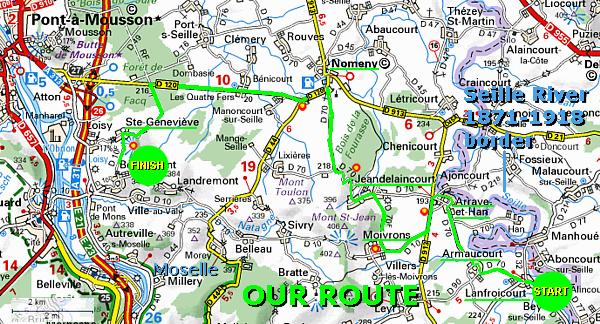
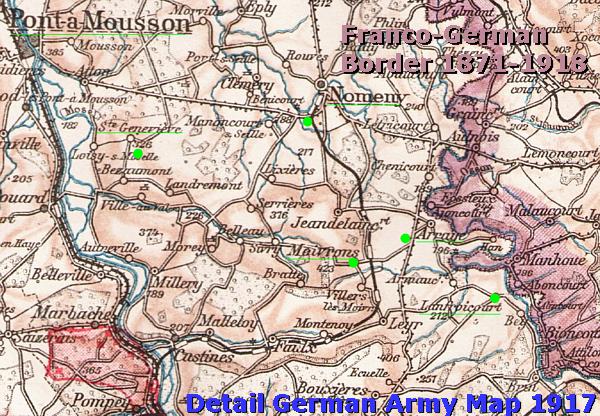

We start in the village of Lanfroicourt with this French shelter bunker.
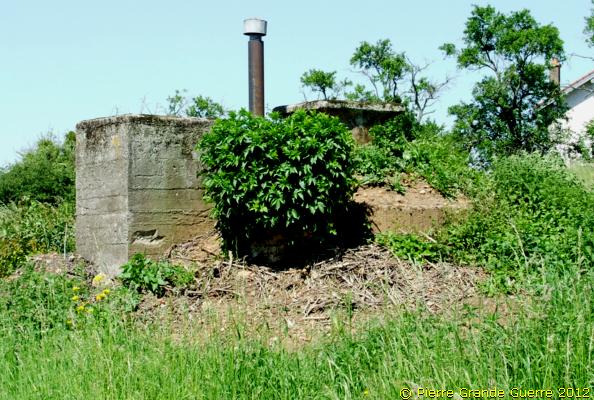
We continue northward along the D 70 to Array-et-Han. At the junction with the D 913 we turn left , to find on the west side of the road two interesting French bunkers.
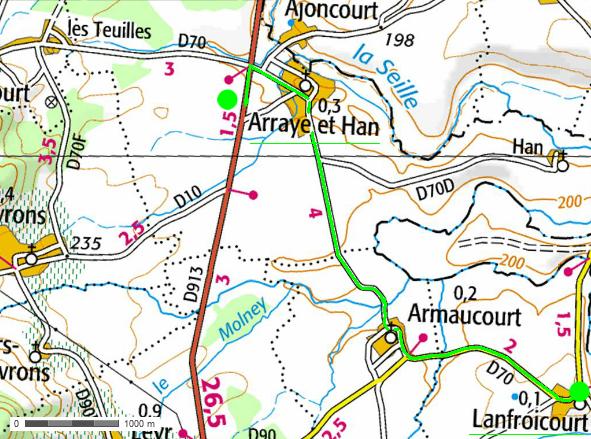
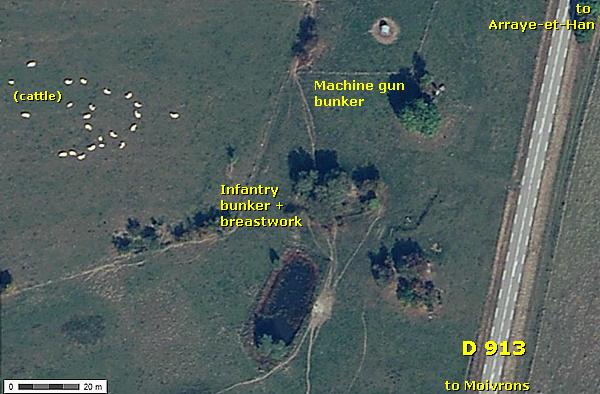
Under the cover of two overgrown trees rest the relics of a French infantry shelter bunker.

I made these photos from behind the barbed wire fence along the verge of the heavy traffic D 913.

The concrete relics suggest that the masonry bunker was surrounded by a breastwork.
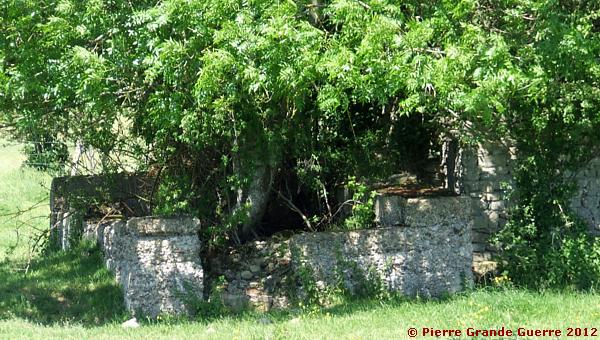
The south side of the bunker shows a part of this breastwork , almost completely intact.
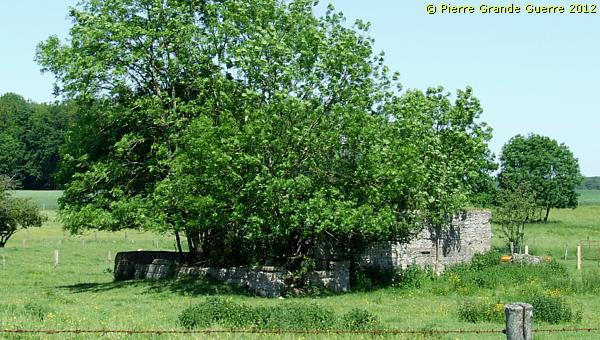
Some 50 M. to the north lies this machine gun bunker, ...
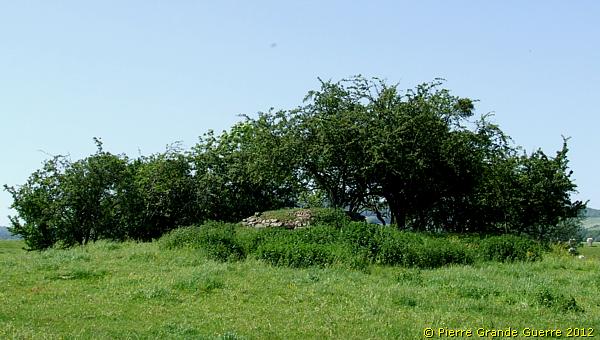
... controlling the road northward in the direction of Ajoncourt on the former Franco- German 1871-1918 border.
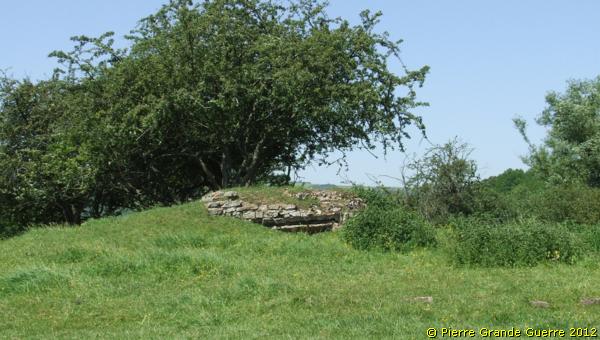
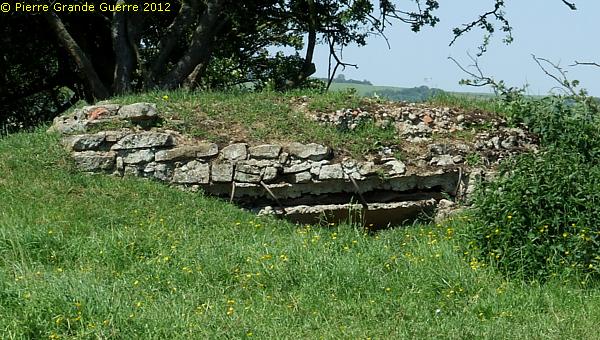
From these bunkers we continue south-westward.
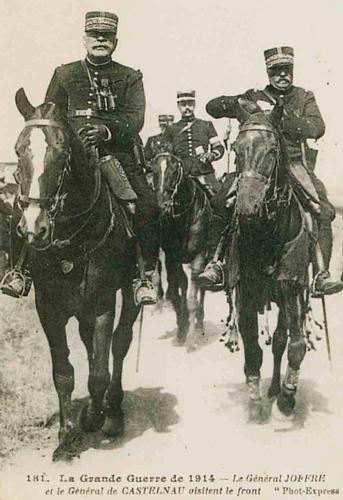
In the village of Moivrons we follow for about 300 m. the D 10 in the Grand Rue.
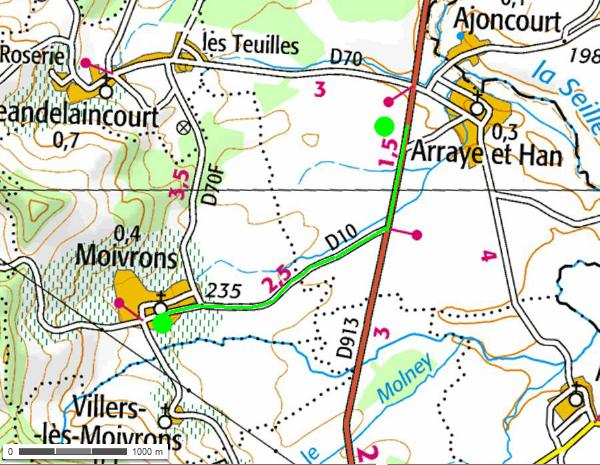
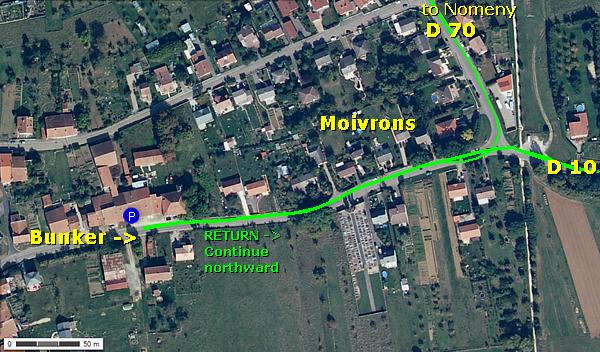
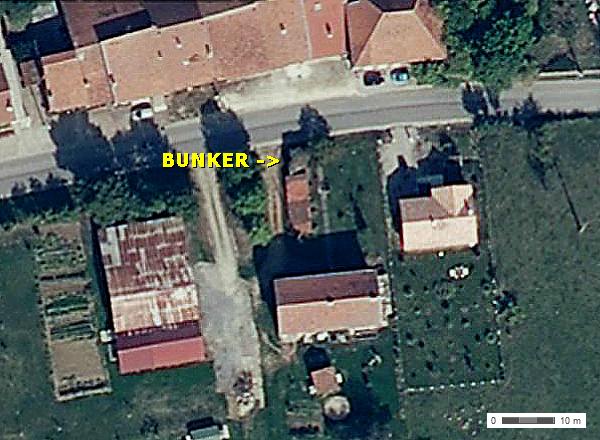
On the left side of the Grand Rue we find in this private front yard a well- preserved concrete bunker, marked with a modern green mailbox.The loop holes are directed eastward , to the direction from which the Germans would come.
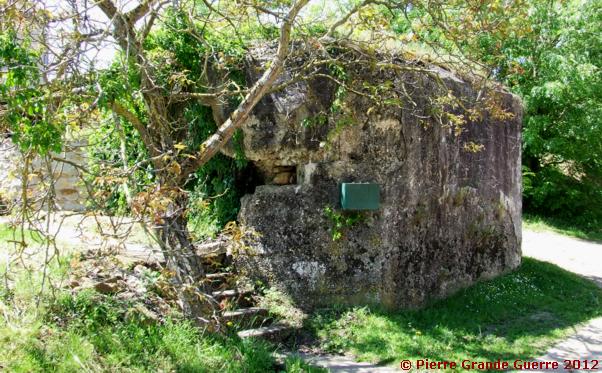
The entrance at the west side of the bunker.
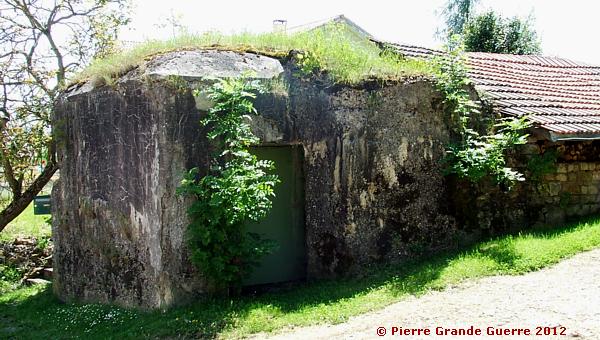
On the northern wall we find some interesting graffiti, ...
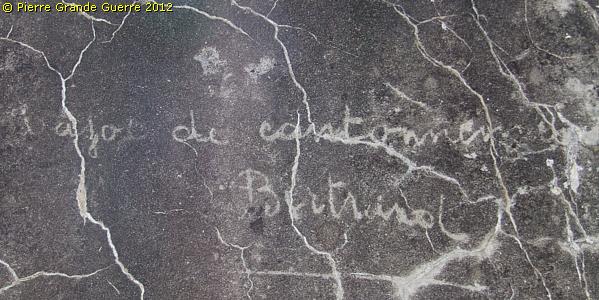
... made by soldiers , only partly legible , alas.
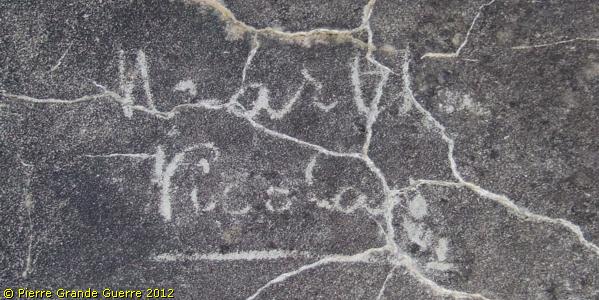
For understandable reasons the owner of the bunker locked the entrance door.
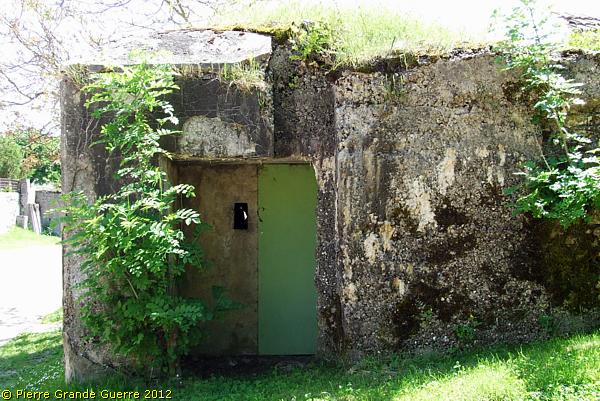
Improvising through the window I nevertheless have tried to give you an impression of the interior with the loop holes directing westward.
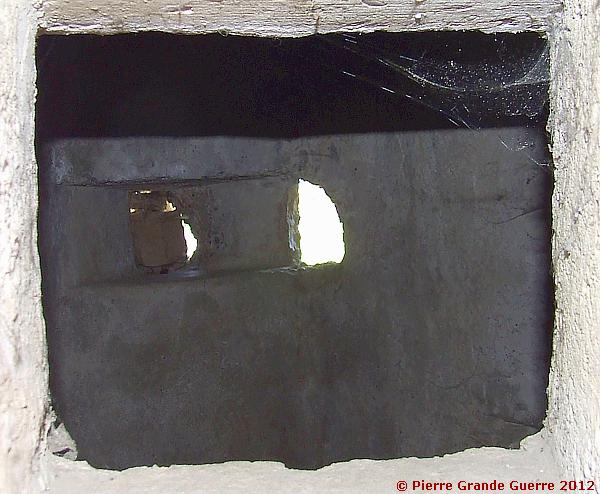
We leave this interesting bunker.

From here we return to the junction with the D 70F, and continue northward in the direction of Nomeny. At the T- junction with the D 120 we go left , and after some 250 m. we find a small copse on the south side of the road.

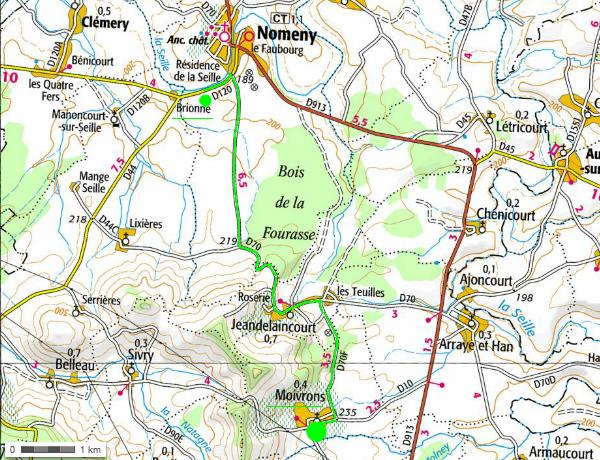
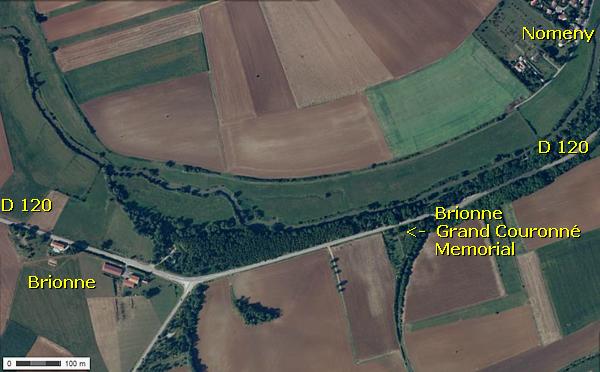
Under the trees we find this modest memorial obelisk, commemorating the events of 20 August 1914 in Nomeny and the hamlet of Brionne.
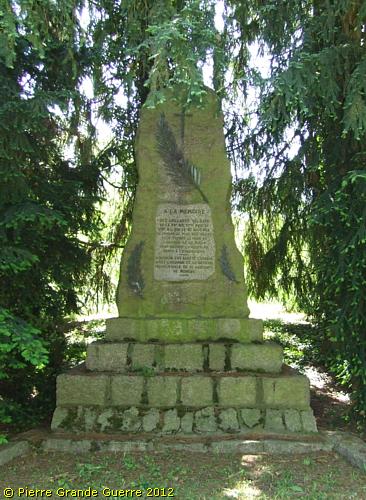
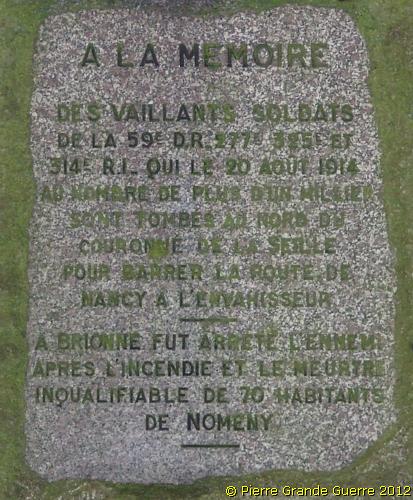
Nomeny - 20 August 1914
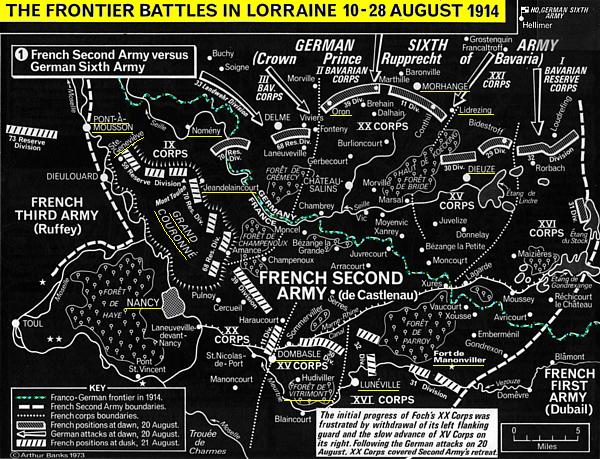
During the last day of the Battle of Morhange on 20 August 1914 , a rapid and succesful Bavarian counter- offensive opened the three days during " Schlacht in Lothringen ".
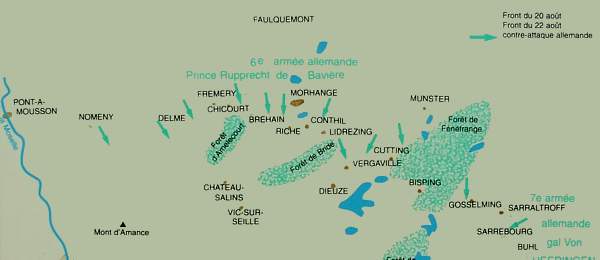
On 20
August 1914 units of B.I.R. 2, B.I.R. 4 and B.I.R.
8 reached nearby Nomeny. These units bombarded and invaded the town, burned
it down, and killed (55 to) 70 civilians.
Below: Bas- relief at the base of the other ( first ) 20 August 1914 memorial in the town centre of Nomeny .
The French 59e D.R., mentioned on the Brionne memorial, defended this region of Nomeny and the Grand Couronné. It was one of the three reserve divisions of the 2e Groupe des Divisions de Reserve commanded by Général Léon Durand (1846-1924).
See later for more details about the Battle of Morhange and "Die Schlacht In Lothringen " my Photo Impression , “ The Battle of Morhange ”
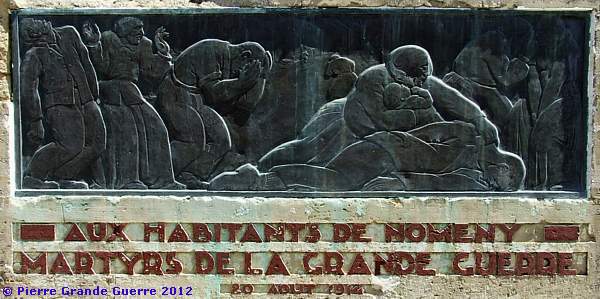

From this "Brionne" memorial we continue westward along the straight D 120.
At the junction with the D 40C we turn left to the village of Ste.- Géneviève. We turn around the village church and take the small road at 5 o’clock south-eastward , marked "Monument du Grand Couronné ".
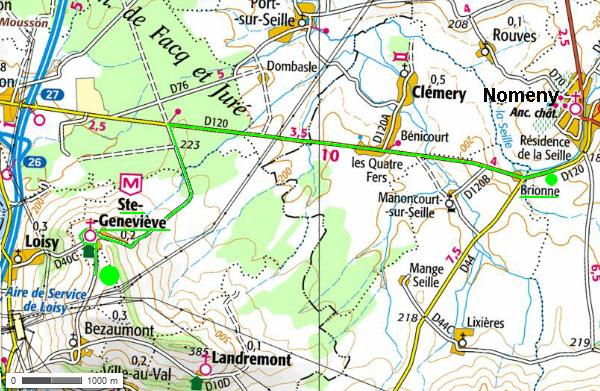
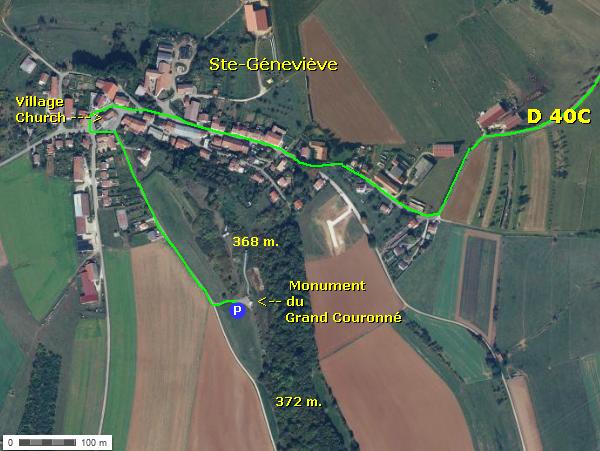
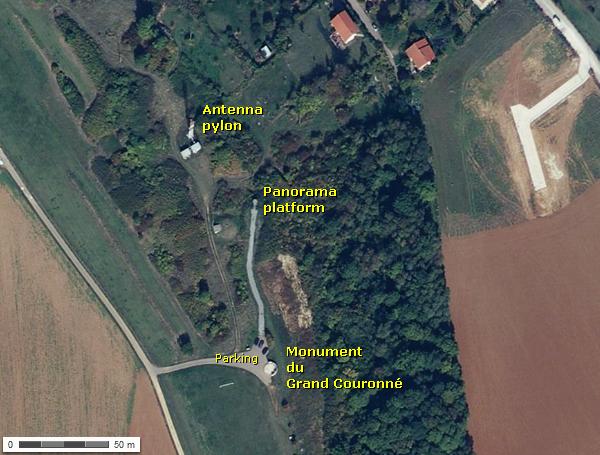
Here we arrive at one of the crowning heights around Nancy, the Côte de Ste.- Géneviève , protecting the city against the Bavarian invaders.
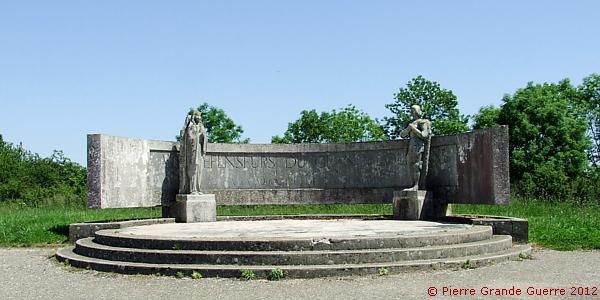
In 1914 the height formed an artillery base of the French 59e Reserve Division.
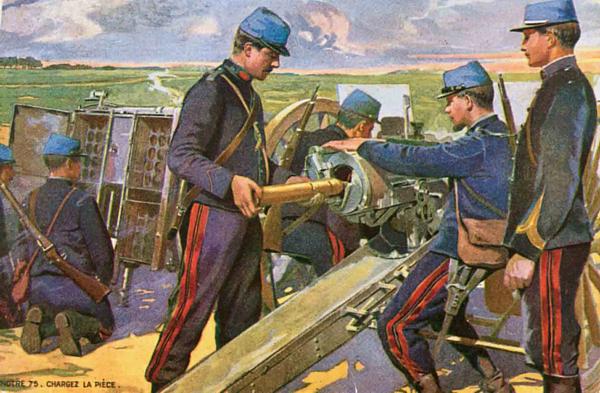
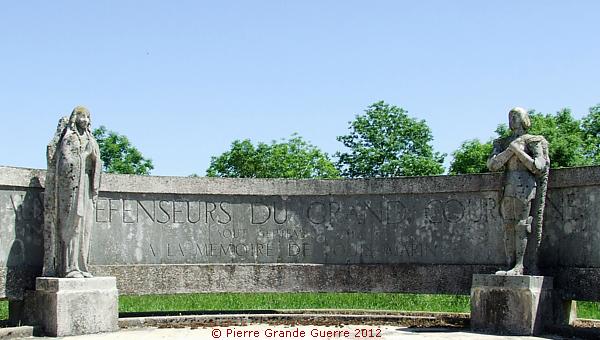
( Louis Marin (1871-1960) was an influential politician, who became in August 1914 the principal leader of the "National Republican Party" of Meurthe-et-Moselle. Marin was also an elected local politician: from 1910 he was the Président of the General Council of Nomeny and from 1934 to 1952 he was Chairman of the General Council of Meurthe-et-Moselle.)
In the next frame I offer you some concise information about the Battle of the Grand Couronné of 4-13 September 1914.
The Battle of the Grand Couronné - 4-13 September 1914
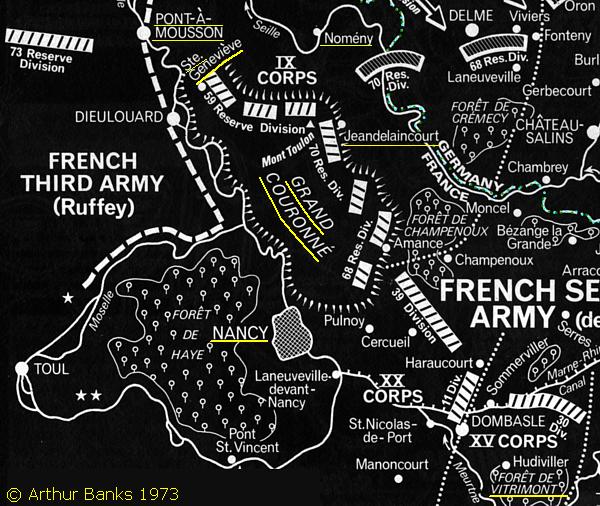
The Grand Couronné formed a defensive line on a series of heights, east of Nancy, including the south-eastern heights of the Léomont and Friscati near Vitrimont .
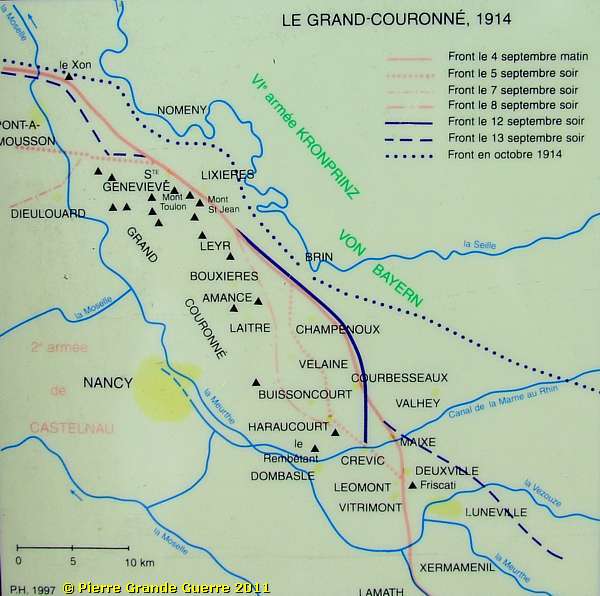
On the heights of the Grand Couronné, east of Nancy, De Castelnau placed the 20th Army Corps of Ferdinand Foch to defend the city.
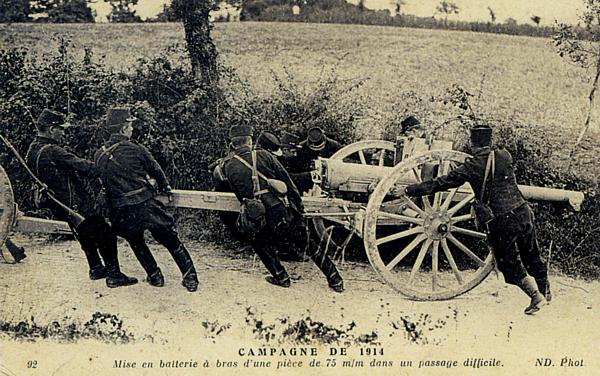
On 4 September Crown Prince Rupprecht launched a new offensive to capture Nancy.
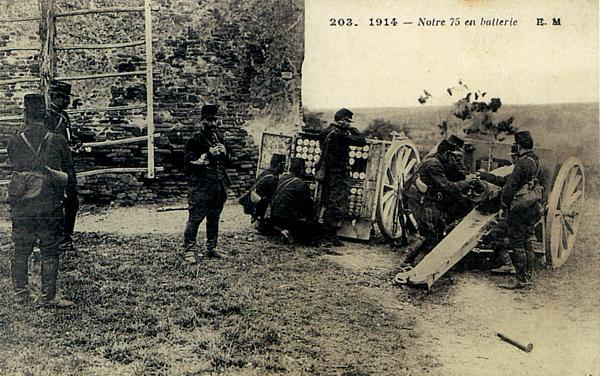
Rupprecht deployed some 350,000 men, while de Castelnau waited with some 225,000 men.
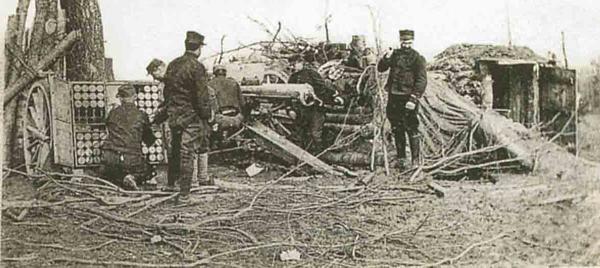
On the same day in the west the French Army was preparing for a more famous battle , which would start the next day : the Battle of the Marne . During the battle all villages in the region were destroyed . On 9 and 10 September Nancy suffered an artillery bombardment of two days .
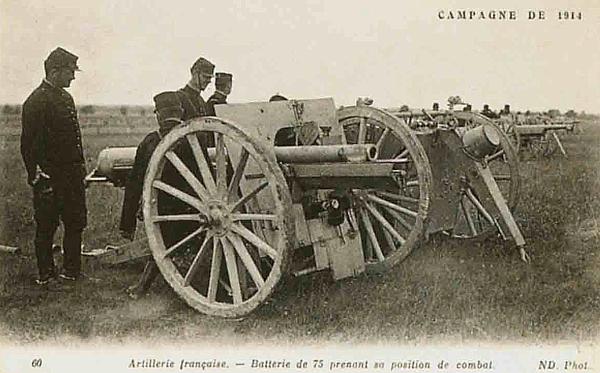
The German Withdrawal
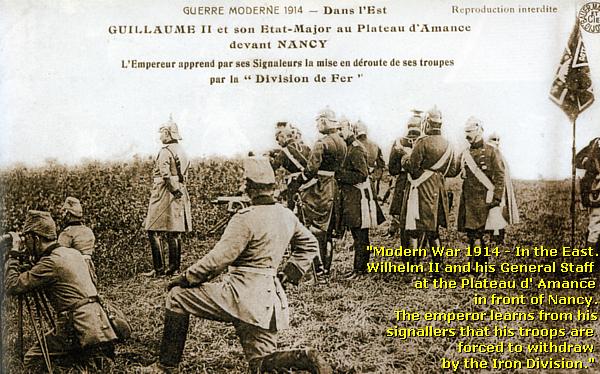
In the Vosges von Heeringen’s Haute- Meurthe Offensive did not reach its goal, the capture of St. Dié. From 10 September von Heeringen retreated from the Col de la Chapelotte on Saales. For the 6th Army the Battle for the Grand Couronné was also not successful at all. Under pressure of General's Foch's 20th Army Corps Rupprecht was not able to capture Nancy.
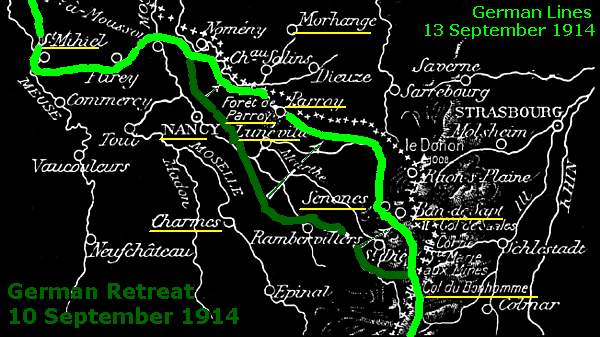
On 11 September the Oberste Heeres Leitung decided to withdraw Rupprecht’s 6th Army under cover of artillery fire . The Bavarians left Lunéville and retreated from Nancy to the Franco- German border of 1871-1918. At some places they even retreated to locations in front of this border, on French territory . After the German retreat the new frontline of Lorraine consolidated until 1918.
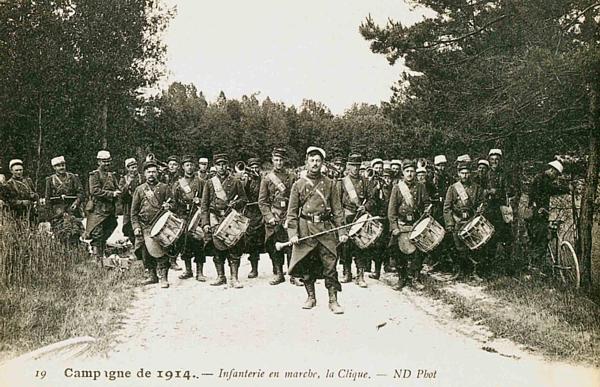
On 13 September the 2e Armée recaptured Lunéville , left by the retreating Germans , without firing a single shot. The Battle of the Grand Couronné ended with a French victory .
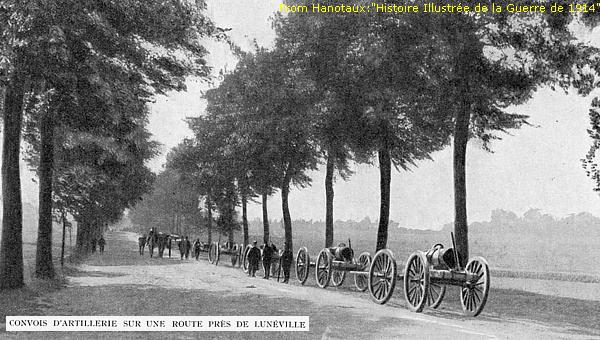

The memorial offers a wide panorama westward over the valley of the Moselle.

From the Grand Couronné Memorial I present to you this panorama westward in 3 overlapping steps, going clockwise from south to north.

View south-westward.
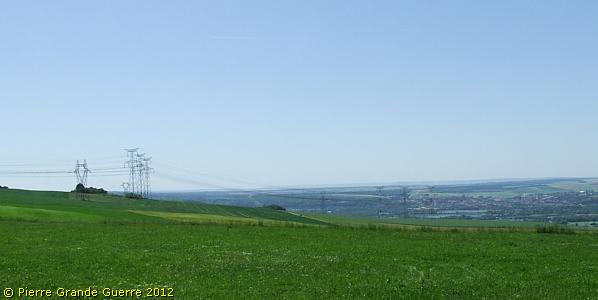
I could not resist to zoom-in twice on the town of Dieulouard. Left …
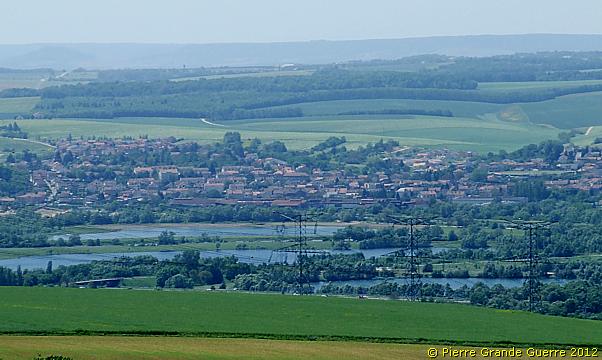
… and right.
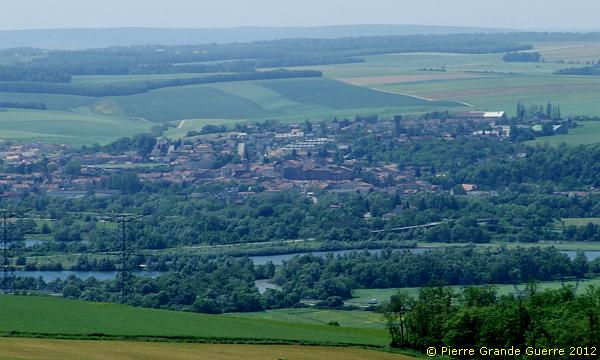
We continue with the second panoramic view westward.
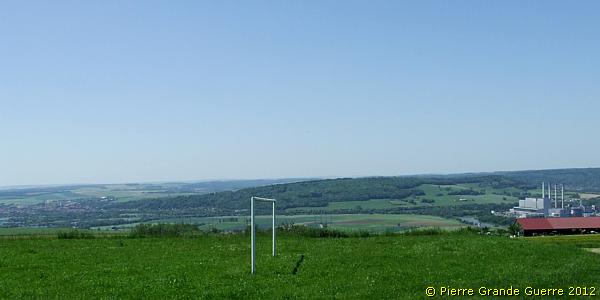
The third panorama north-westward shows a sector of the front of the Saint Mihiel Salient , the Bois le Prêtre .
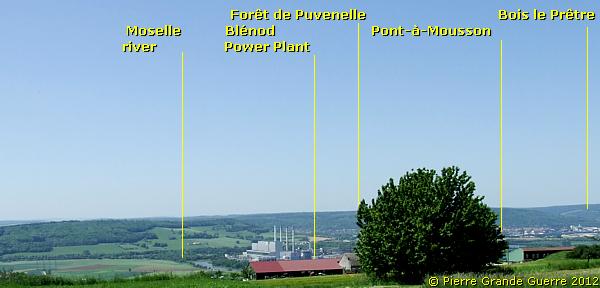
Some 50 m. to the north stands a panorama platform, which offers an almost full 360 degrees panorama.

From the platform we continue to observe the landscape more to the north. It is obvious why this height formed an ideal location for an artillery base, possibly a battery of the 20e Régiment d'Artillerie de Campagne ( Field Artillery ), or the 33e R.A.C., or the 49e R.A.C. The Bois le Prêtre on the other bank of the Moselle ( right ) is clearly within range of artillery.
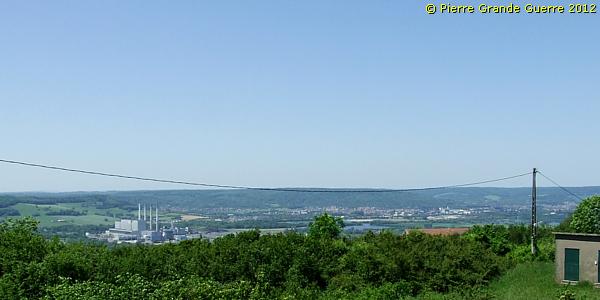
The large bush and the antenna tower block the view northward to the former German positions on the height of Froidmont near Bouxières -sous- Froidmont.
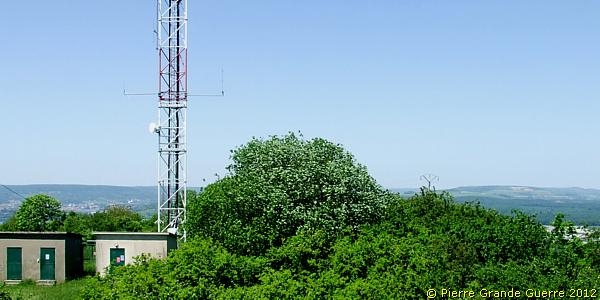
The observation platform offers an amazing panorama eastward , explaining by its wide view the military significance of the Grand Couronné. The panorama shows in particular the importance of this height for the French artillery to defend Nancy and the region around it during the period of August and September 1914.

From the panorama platform I present to you this panorama eastward in 5 overlapping steps, going clockwise from north to south.
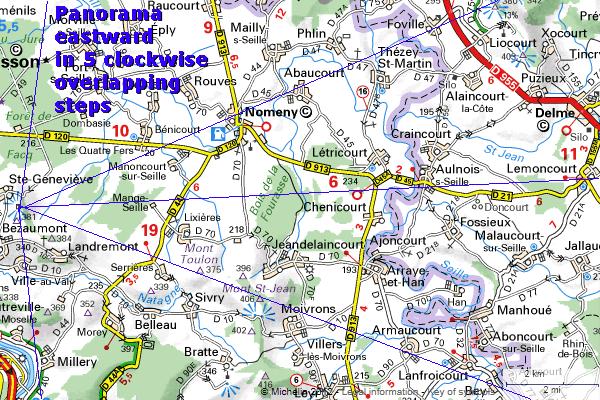
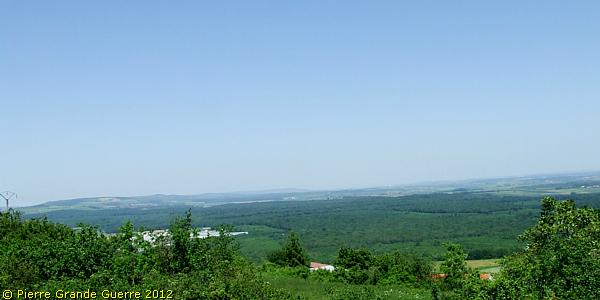
View in the direction of Nomeny and Delme.
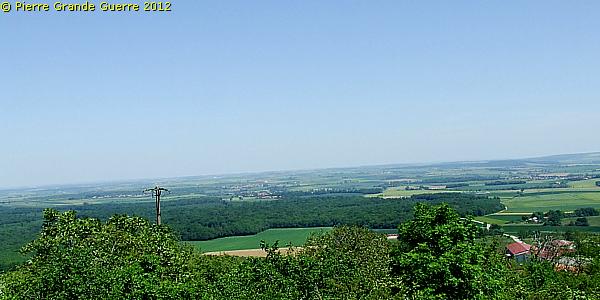
View in the direction of Ajoncourt and Arraye -et-Han.

View in the direction of Manhoué and Lanfroicourt.
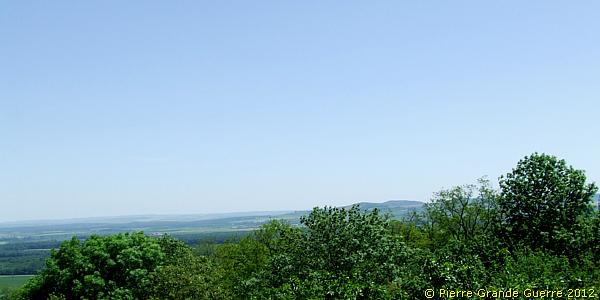
View southward over the ridge.
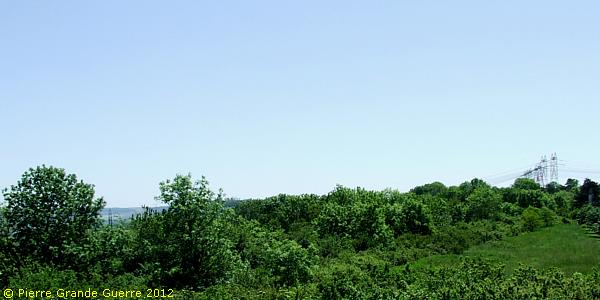
Now we have completed the circle with this last photo of this impression , a panoramic view from the platform south-westward at Dieulouard.

Continue to: " Bouxières-sous-Froidmont - Verny - Feste Wagner "






